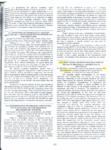Use este identificador para citar ou linkar para este item:
http://www.alice.cnptia.embrapa.br/alice/handle/doc/44780Registro completo de metadados
| Campo DC | Valor | Idioma |
|---|---|---|
| dc.contributor.author | LOMBARDI, M. C. | pt_BR |
| dc.contributor.author | COSTA, L. | pt_BR |
| dc.contributor.author | NOBREGA, J. | pt_BR |
| dc.contributor.author | NOGUEIRA, A. R. de A. | pt_BR |
| dc.date.accessioned | 2011-04-10T11:11:11Z | pt_BR |
| dc.date.available | 2011-04-10T11:11:11Z | pt_BR |
| dc.date.created | 2000-05-03 | pt_BR |
| dc.date.issued | 1999 | pt_BR |
| dc.identifier.citation | In: ANNUAL CONFERENCE OF THE FEDERATION OF ANALYTICAL CHEMISTRY AND SPECTROSCOPY SOCIETIES - FACSS, 26.; INTERNATIONAL CONFERENCE ON ANALYTICAL SCIENCES AND SPECTROSCOPY - ICASS, 1999, Vancouver. Proceedings... Vancouver: FACSS, 1999. p.223. | eng |
| dc.identifier.uri | http://www.alice.cnptia.embrapa.br/alice/handle/doc/44780 | pt_BR |
| dc.description | The complete sample decomposition is not always necessary when measurements are carried out using optical techniques. Depending on both technique employed and sample matrix characteristics, an extraction procedure can be completely suitable for quantitative determinations. To implement this approach is essential to perform a critical evaluation of the behavior of each element, of the extractor solution, and of the temperature and time of extraction. The temperature can be controlled adopting microwave-assisted procedures that guarantee fast heating and repeatability. In this work an open-vessel microwave system (Star 6, CEM) was employed to investigate the efficiency of the extraction procedures. The extraction of Al, Ca, Cu, Fe, Mg, Mn,:and Zn was evaluated in biological (bovine liver, SRM 1577b, NIST) and botanical (apple leaves, SRM 1515, NIST; trace elements in spinach leaves, SR!vf 1570a, NIST; and commercial teas) materials. The extraction procedures were investigated using 1 or 10% v/v hydrochloric or nitric acid solutions. An alkaline solution containing a mixture of water- soluble tertiary amines (CFA-C, Spectrasol) was also tested. All procedures were carried out at temperatures in the range 80-105 oC during time intervals shorter than 10 min. The analytes were determined by flame and graphite furnace atomic absorption spectrophotometry (Intralab, model Gemini AA12/1475 and Varian model 800, respectively), and by inductively coupled plasma atomic emission spectrometry (AtomScan 25, TJA). Copper, Mn, and Zn were quantitatively extracted from biological and botanical materials with all solutions employed. The complete extraction of these elements from biological materials was easier than from botanical materials and it was also observed that acid solutions were more efficient than the CFA-C mixture for botanical samples. Calcium and Mg were quantitatively extracted in some tea samples and it was found that Mg is weaker bound to the matrix than Ca. Aluminum and Fe were poorly extracted in all samples. | pt_BR |
| dc.language.iso | eng | eng |
| dc.rights | openAccess | eng |
| dc.subject | Microwave extractions | pt_BR |
| dc.subject | Biological | pt_BR |
| dc.subject | Botanical | pt_BR |
| dc.subject | Material | pt_BR |
| dc.subject | Microondas extracao | pt_BR |
| dc.subject | Biologico material | pt_BR |
| dc.subject | Botanico material | pt_BR |
| dc.title | Open vessel microwave extraction of metals in biological and botanical materials. | pt_BR |
| dc.type | Resumo em anais e proceedings | pt_BR |
| dc.date.updated | 2015-02-23T11:11:11Z | pt_BR |
| dc.subject.thesagro | Metal | pt_BR |
| riaa.ainfo.id | 44780 | pt_BR |
| riaa.ainfo.lastupdate | 2015-02-23 | pt_BR |
| dc.contributor.institution | MARIA CRISTINA LOMBARDI, UFSCAR | pt_BR |
| dc.contributor.institution | LETICIA COSTA, UFSCAR | eng |
| dc.contributor.institution | JOAQUIM NOBREGA, UFSCAR | eng |
| dc.contributor.institution | ANA RITA DE ARAUJO NOGUEIRA, CPPSE. | eng |
| Aparece nas coleções: | Resumo em anais de congresso (CPPSE)  | |
Arquivos associados a este item:
| Arquivo | Descrição | Tamanho | Formato | |
|---|---|---|---|---|
| PROCIARN1999.00022.pdf | 1,66 MB | Adobe PDF |  Visualizar/Abrir |









